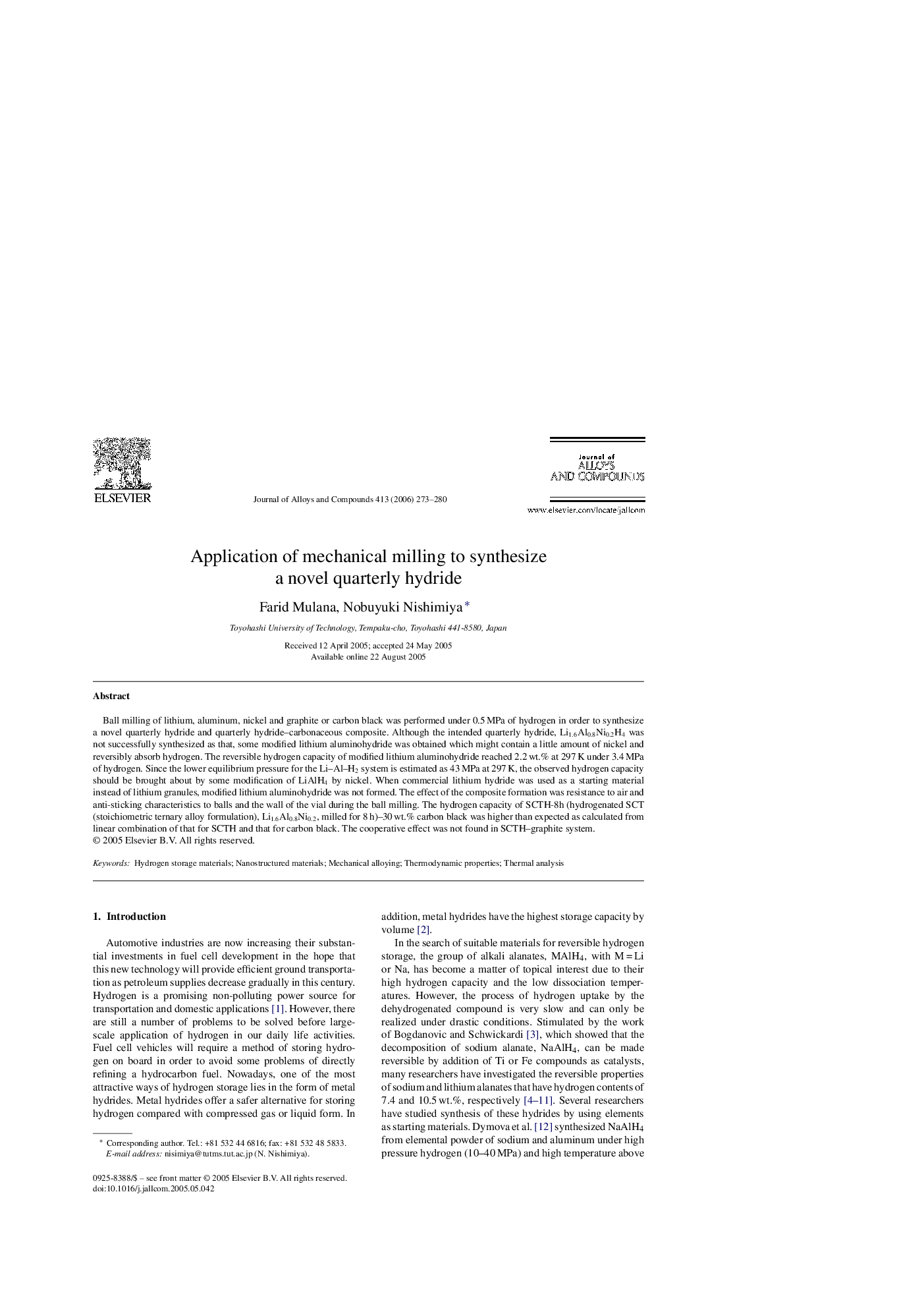| Article ID | Journal | Published Year | Pages | File Type |
|---|---|---|---|---|
| 1627962 | Journal of Alloys and Compounds | 2006 | 8 Pages |
Ball milling of lithium, aluminum, nickel and graphite or carbon black was performed under 0.5 MPa of hydrogen in order to synthesize a novel quarterly hydride and quarterly hydride–carbonaceous composite. Although the intended quarterly hydride, Li1.6Al0.8Ni0.2H4 was not successfully synthesized as that, some modified lithium aluminohydride was obtained which might contain a little amount of nickel and reversibly absorb hydrogen. The reversible hydrogen capacity of modified lithium aluminohydride reached 2.2 wt.% at 297 K under 3.4 MPa of hydrogen. Since the lower equilibrium pressure for the Li–Al–H2 system is estimated as 43 MPa at 297 K, the observed hydrogen capacity should be brought about by some modification of LiAlH4 by nickel. When commercial lithium hydride was used as a starting material instead of lithium granules, modified lithium aluminohydride was not formed. The effect of the composite formation was resistance to air and anti-sticking characteristics to balls and the wall of the vial during the ball milling. The hydrogen capacity of SCTH-8h (hydrogenated SCT (stoichiometric ternary alloy formulation), Li1.6Al0.8Ni0.2, milled for 8 h)–30 wt.% carbon black was higher than expected as calculated from linear combination of that for SCTH and that for carbon black. The cooperative effect was not found in SCTH–graphite system.
